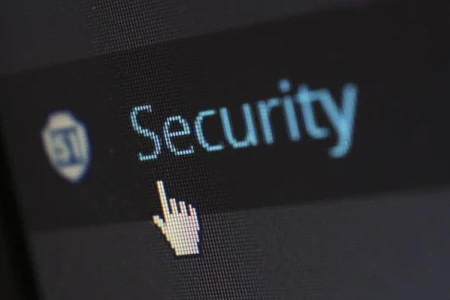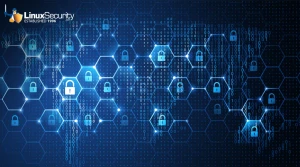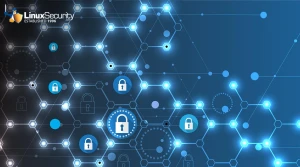Improve Your Digital Security as a Linux User: Tips to Ke

One of the beauties of using Linux for your business is that it’s one of the most secure operating systems available. However, that doesn’t mean you can leave your digital security up to chance. Cyberattacks are becoming increasingly sophisticated and can have devastating consequences, including financial loss, reputational damage, and the theft of sensitive data.
As a Linux user, there are still steps you need to take to make sure your business information is safe from cyber threats. Here are some tips to help you keep your business safe.
Use a Strong Password
A strong password is the first line of defense against digital threats. A strong password is at least 12 characters long and includes a mix of uppercase and lowercase letters, numbers, and symbols. Avoid using easily guessed words like "password" or easily accessible personal information like your birthdate. Instead, create a phrase that you can easily remember but would be hard for someone else to guess. For example, "I always start my day with a cup of coffee" could become "iA$DwacM$C." Avoid using easily guessed words or phrases, and mix up letters, numbers, and special characters. You should also never use the same password for more than one account.
Consider the Best Tools for Password Cracking to check whether your passwords are as secure as they can be.
Set Up Digital Authentication Features
 In today’s business world, it’s more important than ever to have strong security measures in place to protect your company’s data. One way to do this is by setting up digital authentication features, such as two-factor authentication or biometric login. These features add an extra layer of security by requiring users to provide additional information beyond just a username and password.
In today’s business world, it’s more important than ever to have strong security measures in place to protect your company’s data. One way to do this is by setting up digital authentication features, such as two-factor authentication or biometric login. These features add an extra layer of security by requiring users to provide additional information beyond just a username and password.
Two-factor authentication (2FA) is an additional layer of security that requires you to have two out of three types of identification before you can log in to an account. The three types of identification are something you know (like a password), something you have (like a physical key or token), and something you are (like a fingerprint). Enabling 2FA adds an extra step to the login process, but it’s worth it because it makes it much harder for cybercriminals to gain access to your account, even if they have your password.
For example, with two-factor authentication, a user would need to enter both a password and a code that is sent to their mobile phone. This makes it much harder for hackers to gain access to your systems, as they would need to not only know the passwords but also have access to the user’s mobile phone. Similarly, biometric login requires users to provide a fingerprint or other type of biometric data, which is much harder for hackers to spoof. Passwords can be a reliable digital identity authentication factor when used correctly in accordance with strict security procedures.
Use Encryption
Encryption is a process that encodes data so that it can only be accessed by authorized parties. When data is encrypted, even if someone gains access to it, they won’t be able to read it unless they have the encryption key. That’s why encryption is an important part of digital security. There are various levels of encryption, but 256-bit encryption is considered military grade and should be more than sufficient for most businesses. Luckily, most Linux distributions come with full disk encryption enabled by default.
This makes it difficult for unauthorized individuals to access sensitive information, such as customer credit card numbers or confidential business documents. Encryption can be used in a variety of ways, such as encrypting email messages, stored data, and even entire websites.
Create a Cybersecurity Plan
This plan should include measures for preventing attacks, detecting threats, and responding to incidents. It should also be reviewed and updated on a regular basis. Some other key components of a strong cybersecurity program include employee training, email filtering, and two-factor authentication.
Focus On Training Your Staff
Phishing and ransomware are two of the largest risks that organizations must deal with. If staff receive malicious emails and cannot recognize that they are scams, the entire firm is at risk. Similar to internal error, privilege abuse, and data loss, these issues are often brought on by staff members who neglect their security responsibilities. To contain these issues, organizations must support their IT division by regularly providing staff awareness training. Don't post personal information like your address or date of birth, and think twice before sharing sensitive information like photos or financial details.
Be Wary of Email Attachments
Email attachments are one of the most common ways for cyber criminals to spread malware because people are often tricked into opening them without realizing they contain malware. That’s why it’s important to be wary of email attachments, even if they appear to come from someone you know.
If you receive an email attachment from someone you know but weren't expecting one, confirm with the sender that they actually sent it before opening it. If you receive an attachment from someone you don't know, delete the email without opening it because there's a good chance it contains malware designed to infect your system as soon as you open the attachment.
Set Up Firewalls
A firewall monitors traffic going in and out of your network and blocks suspicious activity. It’s basically like a barrier between your network and the internet, and it’s an important part of digital security because it can block many types of attacks before they even reach your systems. Most Linux distributions come with a firewall installed by default, but it might not be enabled. Check with your system administrator or consult your distribution’s documentation on how to enable the firewall if it isn’t already enabled.
The first line of protection against a hacker attempting to hack into your terminals is a good firewall. Without one, a hacker can infect your computer with malware and steal crucial data such as personal and credit card information.
Update Your Software
Software updates often include security patches that close vulnerabilities that could be exploited by cybercriminals. Make sure you set your software applications to update automatically or that you manually update them on a regular basis. It’s also important to keep your operating system up-to-date for the same reason. Fortunately, most Linux distributions include automatic updates, so you don’t have to worry about manually updating them.
Similar to passwords, once these vulnerabilities are made public, hackers start looking for users of that particular software who might be exposed. Installing an update will take less time than dealing with a real data breach.
Consult an Expert
Every small business requires strong support. Security professionals focus solely on your network architecture, and can evaluate present and potential risks. Hiring digital security professionals can acquire the most recent security features. Additionally, if your team hasn't yet received sufficient training, cybersecurity professionals can bridge this knowledge gap and safeguard the business until your team is prepared to take over.
Data security should always be a major priority as the world transitions from paper-based systems to digital ones. You may better secure your data, employees, customers, and organizations from security risks and hackers by choosing the appropriate technology, implementing policies, and training staff. By taking some simple precautions, you can make sure your Linux system is as secure as possible against digital threats, keeping your business safe in the process. Following these tips will help safeguard your business against any potential cyber threats.





















